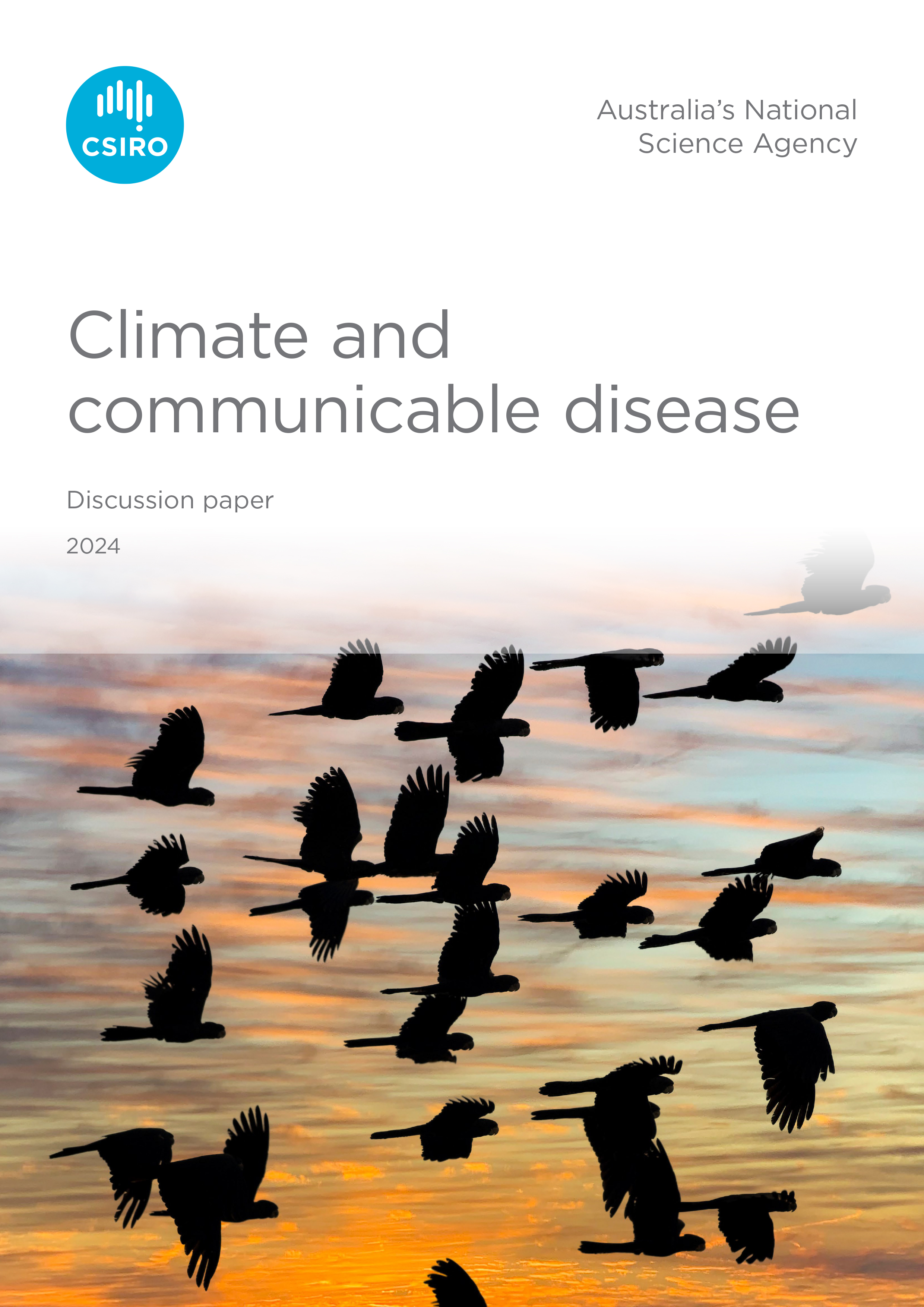Climate change is reshaping Australia's communicable disease landscape and action is needed

This discussion paper explores how Australia's changing climates are projected to increase the incidence and severity of communicable diseases by 2050. It highlights the differences in climate sensitivity across various disease types, provides a framework for assessing priority risks and identifies critical research needed to support Australia's national resilience.
Download the report
Communicable diseases already place significant burden on individual health, public health and health systems in Australia. Climate change - through rising temperatures, changing rainfall patterns and extreme weather events - is driving a shift in the types and geographic spread of communicable disease across the country.
These climatic changes create more favourable conditions for disease transmission by:
- increasing pathogen virulency
- changing human behaviours that influence exposure risks
- expanding the geographic range, seasonality and intensity of disease transmission.
Mosquito borne diseases are the most climate sensitive transmission type of communicable disease in Australia, with other vector borne diseases, food and water borne diseases, zoonotic diseases, and soil borne diseases also aggravated by multiple climate conditions.
Understanding climate impacts on Australia's future communicable disease risks
To strengthen Australia's resilience against future communicable disease outbreaks, national investments should consider three key factors:
- The climate sensitivity of diseases.
- The severity of disease impacts.
- The readiness of Australia's health systems to detect and respond to emerging risks.
This report identifies four critical areas where further research and analysis are required:
- understanding climate sensitivity
- predicting disease incidence
- projecting health and health system impacts
- enhancing monitoring, detection and surveillance frameworks.
By investing in these research priorities today, Australia can better anticipate, prepare for, and respond to the communicable disease risks of tomorrow.
Climate change is reshaping Australia's communicable disease landscape and action is needed
This discussion paper explores how Australia's changing climates are projected to increase the incidence and severity of communicable diseases by 2050. It highlights the differences in climate sensitivity across various disease types, provides a framework for assessing priority risks and identifies critical research needed to support Australia's national resilience.
Download the report
- Climate and communicable disease PDF (2 MB)
- Climate and communicable disease (accessible text) TXT (101 KB)
Communicable diseases already place significant burden on individual health, public health and health systems in Australia. Climate change - through rising temperatures, changing rainfall patterns and extreme weather events - is driving a shift in the types and geographic spread of communicable disease across the country.
These climatic changes create more favourable conditions for disease transmission by:
- increasing pathogen virulency
- changing human behaviours that influence exposure risks
- expanding the geographic range, seasonality and intensity of disease transmission.
Mosquito borne diseases are the most climate sensitive transmission type of communicable disease in Australia, with other vector borne diseases, food and water borne diseases, zoonotic diseases, and soil borne diseases also aggravated by multiple climate conditions.
Understanding climate impacts on Australia's future communicable disease risks
To strengthen Australia's resilience against future communicable disease outbreaks, national investments should consider three key factors:
- The climate sensitivity of diseases.
- The severity of disease impacts.
- The readiness of Australia's health systems to detect and respond to emerging risks.
This report identifies four critical areas where further research and analysis are required:
- understanding climate sensitivity
- predicting disease incidence
- projecting health and health system impacts
- enhancing monitoring, detection and surveillance frameworks.
By investing in these research priorities today, Australia can better anticipate, prepare for, and respond to the communicable disease risks of tomorrow.
